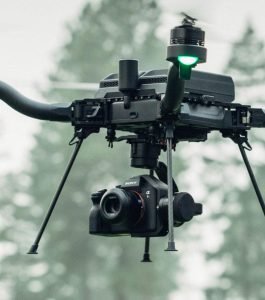With the coming of age of AI and IoT, the origins of the Internet seem to belong to another era. They can be traced back to the 1970s with ARPANET, a project designed by the US Department of Defence to connect remote military sites across the country. Today, the Internet is a consumer technology that touches the lives of most people on the planet.
By contrast, we’re now seeing an increase in the implementation of initially consumer-focused technologies by the business world, with our mobile phones being the device blending our business and consumer personas.
Adding value to enterprise
The market for business technology is booming as organisations everywhere look for more efficient ways to support their workforce and streamline their ways of working. The ongoing adoption of remote and hybrid working means the need for a top-line vision of business operations remains crucial.
Although it may be more widely known as a consumer technology company, Sony has been developing enterprise technologies such as its TEOS workplace management solutions or solutions for the media and broadcast industry, for some time. At the same time, though, the company has been examining how its patented consumer-focused developments can add value to enterprise organisations. Its image sensor technologies, for example, have led to some remarkable discoveries in recent years.
Smart city trials
Sony’s IMX500 image sensors were at the core of smart city trials carried out in Rome in June 2021. Run by world-leading green-tech company Envision, the trials were designed to reduce traffic, optimise public transportation, and support pedestrian safety.
The sensors’ AI processing functionality meant real-time metadata could be extracted relating to information on free parking spaces, the presence of pedestrians about to cross a street, or the number of people getting on or off a bus. This is without the need to store images or share them beyond the sensor itself, thereby addressing citizens’ privacy concerns.
Image Sensing
Naturally, the development of cutting-edge image sensors such as the IMX500 has propelled Sony into being one of the most respected digital imaging companies. Its cameras are now seen in the hands of some of world leading photographers and videographers such as award-winning portrait photographer and educator Hannah Couzens, multi award-winning sports photographer Bob Martin, and professional filmmaker Dennis Schmelz, whose films have been shown all over the world.
And, increasingly, these cameras are also being considered for business applications.
Partnership
Sony’s decision to open up its cameras’ SDKs, culminating in a full Remote Command Toolkit, and work together with different organisations has resulted in a host of incredibly interesting applications in business markets.
 Companies such as DeGould, the innovative engineering and software company for the automotive industry, and Auterion, the open-source company powering the world’s leading drone manufacturers, have worked with Sony to make use of the incredible resolution and versatility of cameras such as the Alpha 7R IV, Alpha 7C, and Alpha 9 IIs to realise a competitive advantage.
Companies such as DeGould, the innovative engineering and software company for the automotive industry, and Auterion, the open-source company powering the world’s leading drone manufacturers, have worked with Sony to make use of the incredible resolution and versatility of cameras such as the Alpha 7R IV, Alpha 7C, and Alpha 9 IIs to realise a competitive advantage.
The integration of Sony’s cameras within DeGould’s AI-powered vehicle inspection systems means automotive OEMs can now perform quick and seamless quality checks.
Where pictures once had to be taken manually, the introduction of the Sony Camera SDK means it can now be done remotely and controlled from a software GUI. The SDK also means drone manufacturers only need to integrate Sony’s cameras within Auterion’s open-source platform once without having to write a single line of code.
AI and cryptography
In addition to its innovative image sensors and SDKs, there is also growing interest from companies in Sony’s exciting AI-based technologies.
The pioneering eye detection autofocus technology in Sony’s Eye AF feature meant that its cameras became a must for portrait photographers, for example, while Eye AF for Animals did the same for wildlife photographers. In fact, the AI-learning element of the technology is being studied by companies looking for a competitive edge.
But perhaps one of the most exciting recent uses of consumer technology in the business sector has been the digital encryption of images to prevent the forgery of personal identification documents such as passports or drivers’ licences.
Known as in-camera signing, the new functionality cryptographically signs every image captured by an appropriately equipped camera. Any subsequent modification of pixels or tampering with the image will result in a picture that no longer matches its digital signature, making manipulation much easier to detect.
Image Sensing the future
Technological innovations like the internet, originally designed for the military-industrial complex, are now a common part of our everyday lives. It’s time, then, to flip this approach on its head.
As we’ve seen, from helping to manage smart cities to increasing the efficiency of vehicle inspections, and from seamlessly integrating cameras into drones to combating identity fraud, the possible business applications of Sony’s image sensor technologies are virtually limitless.
Not only are the possibilities limitless, but they are also safe and secure in a world where fake and non-fake content creation is rife, and authorship is difficult to attribute. SDK-like solutions can bring clarity and due recognition to consumers and professionals alike.
Author
Matthew Swinney is Head of Image Sensing Solutions at Sony Europe. He has over two decades’ experience working for Sony in sales and marketing roles, with a strong focus on integrated systems and solutions. He is spearheading Sony’s journey to make cameras and imaging technology available for bespoke workflows and applications across a wide range of industries.
Images: Sony Europe
See also: Sony aims a camera at drones and robots for industrial users

